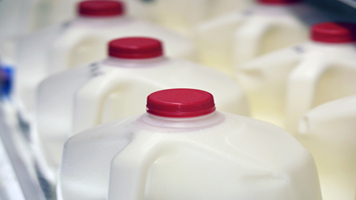Dairy Industry Moves on From Grasslands Announcement
Category: Commentary, Dairy, Miscellaneous
 (AG Week) – When Maurie Young found out Grasslands Dairy Products no longer would be taking his milk, he was caught off guard.
(AG Week) – When Maurie Young found out Grasslands Dairy Products no longer would be taking his milk, he was caught off guard.
“We were just in disbelief, kind of in shock,” he says.
Young, owner of Emerald Spring Dairy in Plainview, Minn., was among approximately 75 producers in Minnesota and Wisconsin told by Grasslands Dairy Products that the company no longer would be buying their milk as of May 1. Changes in Canadian pricing for ultrafiltered milk meant Grasslands lost business in Canada and no longer had need for all that milk.
The Minnesota dairy producers affected found new processors by April 26. Wisconsin Department of Agriculture, Trade and Consumer Protection Secretary Ben Brancel in a statement on May 1 announced that cooperatives and processors had picked up 99 percent of the Wisconsin milk affected.
Laura Daniels, president and founder of the Dairy Girl Network, a community of women in the dairy industry, says the feeling of shock and disbelief Young felt was not uncommon for producers.
However, Daniels, a Cobb, Wis., dairy producer who was not directly affected by the Grasslands changes, says such a scenario was not unforeseen given realities about milk supply.
“I just worried about what if they had too much milk, who are they going to cut? Is it going to be me?” she says. “Once it happened, it just kind of put this whole new sense of urgency to concerns that I think were already there, lying beneath the surface.”
As soon as he learned Grasslands wouldn’t be buying his milk, Young started making calls, including to some places provided as leads from Grasslands. He says he “kind of knew” milk processors were near capacity, but he quickly learned just how “maxed out” of space they were.
It wasn’t long ago, Young says, when companies were competing for milk. That’s no longer the case, and Young strongly urges farmers considering expanding their dairies to make sure their processors are part of the conversation as the capacity might not be available.
“We used to take it for granted that was always there,” he says. “Those days are over.”
Part of the issue, Daniels says, is that there is more milk from outside the region coming to area processors than before, though she says it’s hard to know how many tanker loads are arriving. Beyond that, the dairy industry hasn’t figured out whether there is too much milk or not enough processing capacity, Daniels says.
Dairy Girl Network worked with the Wisconsin Farm Bureau Federation to hold informational meetings after the Grasslands announcement, and about 90 percent of the affected Wisconsin producers showed up. Farmers who had not lost contracts helped connect affected producers to places that might have space.
Many processors, in the midst of getting loads of milk from the “spring flush” when cows are producing at their highest level, did not have room for more milk, Young says.
“The timing couldn’t have been worse,” he says.
It was hard for Young not to think about the possibility that his dairy wouldn’t find a new market by May 1.
“We were very on edge about it,” he says.
However, a few indicated they’d see what they could do, and by April 24 — a week before Grasslands would stop taking milk — Young had lined up a new home for his milk.
While the Minnesota producers seem to have found ways to keep operating, Daniels says several affected Wisconsin dairy farms decided to sell out.
She says there will be continuing ramifications for the dairy industry. Several creameries began announcing they would be cutting premiums in the wake of Grasslands letting farmers go, she says.
She also believes the situation will lead to more discussion about the importance of the terms in long-term contracts, both for farmers and processors. While many feel the Grasslands situation was unfair to farmers, Daniels points out that farmers have left processors with 30 days notice in the past.
Finally, Daniels says some cooperatives have begun sending out warnings to members when they are close to capacity so members can take steps to decrease their milk supply as needed, whether by milking fewer cows, allowing cows to dry up faster or changing feed inputs. Such warnings need to become more widespread so processors and farmers can deal with the supply situation together, she says.
“I’m very hopeful that dairy farmers across the midwest and really across the nation stay engaged on this conversation, because there is so much we have to figure out right now,” Daniels says.




